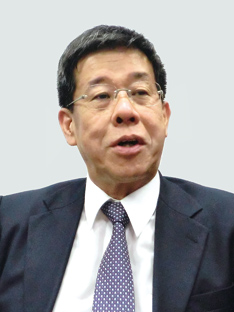
Mr. Shinya Higuchi, Nippon Steel’s managing director, told Japan Metal Bulletin that steel supply could tighten in Asian market relatively early when Chinese steel industry is currently shifting to production and export adjustment though South Korean steel makers are keeping high level and export yet. He gave a view domestic steel supply and demand balance could also improve at the yearend or in early January along Japanese steel makers’ output adjustment. Nippon Steel will suspend no.2 blast furnace in Kimitsu iron works ahead of the initial plan to adjust crude steel output in balance with present demand level.
Mr. Higuchi showed a concern on unforeseeable condition of world economy due to economic slump in advanced countries and decelerated economic growth in emerging countries. Meanwhile, he referred to positive factors that Asian countries including China currently shift to credit easing policies. Steel demand in Japan is expected to increase for automobiles and building materials while aftermath of flood in Thailand and high yen rate would have negative impacts, he said. World Steel Association predicts world steel consumption would increase by 85.1 million tonnes year-on-year to 1.3975 billion tonnes in 2011 and to 1.4736 billion tonnes in 2012, which is expected to hit the record high for two years in a row. Ministry of Economy, Trade & Industry of Japan currently reviewed Japanese crude steel output forecast for October-December by 890,000 tonnes downward from previously estimated 28.21 million tonnes due to flood damage in Thailand and low economy in Asia. Mr. Higuchi explained car production in Thailand decreased by 68% in October from a year earlier due to flood and maintained low level in November. He told the production is expected to recover gradually in early 2012. Japanese steel industry has been affected by the flood directly or non-directly. Nippon Steel cautiously watches Thai market and rebuilding of supply chains by Japanese industry. As for Japanese car output, Mr. Higuchi suggested the production could reach 5 million cars in the last half of fiscal 2011 (October 2011-March 2012) and exceed 9 million cars through fiscal 2011 if Japanese automakers try to recover quarterly output loss in January-March. Thus he indicated supply of high grade automotive steel products is likely to maintain tight in the second half of fiscal 2011. Steel makers in Europe, Japan and China are moving to output reductions while some of North American and Chinese steel makers have currently announced price hike for steel products, said Mr. Higuchi. He analyzed domestic and overseas steel market prices are expected to rebound at an early date since world steel demand is forecasted to continue expansion mainly in Asia and emerging countries. Raw material prices will downturn in January-March. Mr. Higuchi explained iron ore price is likely to lower by 14% compared with October-December and coking coal price to lower by 17-18%. However, he said productive costs are unlikely to decrease since high-price iron ore and coal are left in January-March due to steel makers’ output reductions. He explained Nippon Steel cannot reflect raw material cost down immediately on steel product prices. Nippon Steel posted non-consolidated actual loss in the first half of fiscal 2011. Mr. Higuchi also paid attention to increase of steel imports under historically high yen trend. Steel import from South Korea expanded by 63% to 650,000 tonnes in October from a year earlier and hit the extremely high volume. He explained Asian major steel makers are increasing steel export due to low currency. He emphasized Nippon Steel continues cautious output control in balance with the demand.











